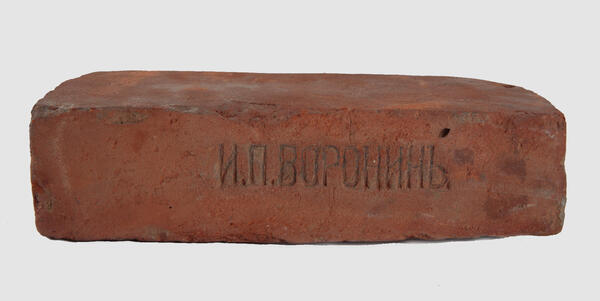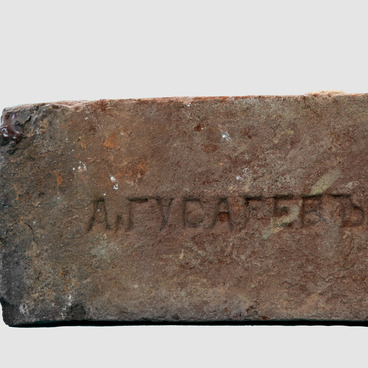Ivan Voronin, who came from a merchant family in Sergiyev Posad, was a major brick factory owner in the Mytishchi Volost (rural district). Voronin’s business in Mytishchi was established in 1897. The Main Land Office issued the permission in 1897 that allowed Voronin to rent a land lot “for clay and sand extraction and construction of a factory” for 36 years, with a total area of 0.468 sq. m.
According the the documents, the land that Voronin rented was a part of the Rupasovo village. It bordered on the Moscow-Yaroslavl-Arkhangelsk railway and the state-owned land, on the land of the Perlovo dachas (summer house community), on the Tarasovskaya village, and on the Cherkizovo village.
By 1900, they built a baking kiln with a fire tube, drying barns for mudbricks, tents for bricks, and a stone forge. At the same time, an office, a kitchen, a two-story barrack, eight one-story residential houses for the workers, and a sauna were added to the factory. All building were made of logs and had an iron roof. In summer 620 people worked at the factory, and 200 people worked there in winter.
The factory was profitable immediately. The owners spent quite a lot on money on technological upgrades. In 1912–1914, he reconstructed brick kilns and replaced manual molding with machine molding on new belt presses. In the extension of the engine room he installed a compression plant and bought the first available excavator to extract clay. He laid extra narrow-gauge railways and bought carts to transport clay and sand. They used a portable engine to mold and dry peat bricks.
The old processing line left after the upgrade was re-purposed for production of high-quality manually molded bricks by seasonal workers. In every workplace they installed manual presses for a tighter molding. Such bricks were top-quality and very expensive so the factory produced them in small batches and only on prepay basis.
The factory shared their stock of fuel to heat up hospitals and paid extra to doctors, paramedics, and employees. Until June 1918, they owner of the factory regularly paid a 5% tax on his total income to the State Treasury.
According the the documents, the land that Voronin rented was a part of the Rupasovo village. It bordered on the Moscow-Yaroslavl-Arkhangelsk railway and the state-owned land, on the land of the Perlovo dachas (summer house community), on the Tarasovskaya village, and on the Cherkizovo village.
By 1900, they built a baking kiln with a fire tube, drying barns for mudbricks, tents for bricks, and a stone forge. At the same time, an office, a kitchen, a two-story barrack, eight one-story residential houses for the workers, and a sauna were added to the factory. All building were made of logs and had an iron roof. In summer 620 people worked at the factory, and 200 people worked there in winter.
The factory was profitable immediately. The owners spent quite a lot on money on technological upgrades. In 1912–1914, he reconstructed brick kilns and replaced manual molding with machine molding on new belt presses. In the extension of the engine room he installed a compression plant and bought the first available excavator to extract clay. He laid extra narrow-gauge railways and bought carts to transport clay and sand. They used a portable engine to mold and dry peat bricks.
The old processing line left after the upgrade was re-purposed for production of high-quality manually molded bricks by seasonal workers. In every workplace they installed manual presses for a tighter molding. Such bricks were top-quality and very expensive so the factory produced them in small batches and only on prepay basis.
During World War One, the factory paid considerable sums of money to the Military Department that was used for urgent construction of artillery ammunition factories. They also paid allowance to the families of employees drafted to the army. The factory also sent money to the hospitals and infirmaries of the Mytishchi Volost to buy medical supplies, paid the food expenses for the sick and the wounded who returned from the frontline and paid allowance to their families.
The factory shared their stock of fuel to heat up hospitals and paid extra to doctors, paramedics, and employees. Until June 1918, they owner of the factory regularly paid a 5% tax on his total income to the State Treasury.



